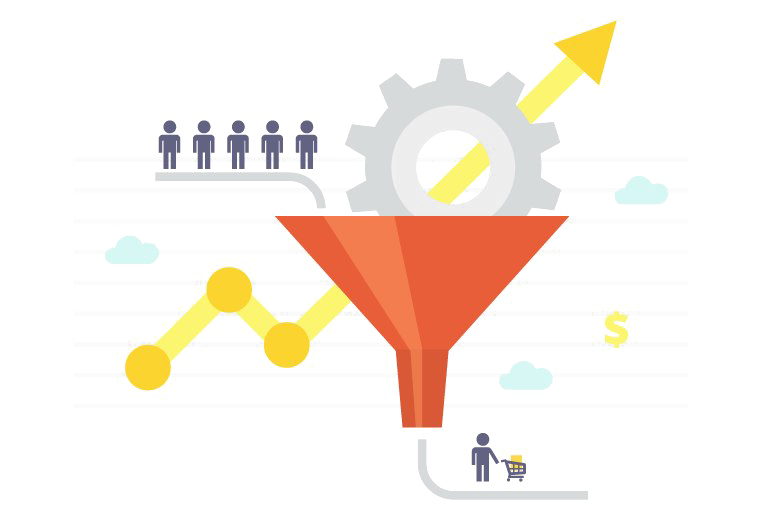Re-envisioning the SDR role through the lens of a Demand Gen Marketer

Is it time to reimagine the sales development rep (SDR) role?
The B2B buyer’s journey has changed dramatically over the past few decades, but revenue organizations–particularly outbound sales–have been slow to catch up. Our recent podcast guest argues for a new approach to sales development.
Sam Kuehnle is the VP of Demand Gen at Refine Labs, a marketing strategy and research firm for B2B SaaS companies. Sam joined the Predictable Revenue podcast to discuss re-envisioning the SDR role through the lens of demand gen markets.
The problem with the old SDR model
Traditional sales development models have emphasized volume above all else. SDRs are instructed to make a certain number of dials daily, and the quality of those conversations was largely irrelevant as long as they kept dialing.
That strategy may have worked 15 years ago, but the buyer’s journey has changed. Back then, if a lead was interested in learning more about a product, they had to reach out directly to the company. The sales team was their primary source of information.
Today’s buyers have a wealth of knowledge at their fingertips. A quick Google search will turn up thousands of comparable products, third-party reviews, and Youtube videos breaking down different features.
The buyer’s journey has changed, and it’s time sales development caught up.
What sales leaders can learn from demand generation marketing
Many sales leaders remain stuck in the volume-based model because it’s all they’ve ever known; it also offers a predictable path to growth. If 100 dials a day results in one opportunity, the simplest path to scaling is to add more dialers.
But there is another way to grow without adding volume. Instead of increasing the number of dials, what would happen if you improved conversion rates so that 100 dials resulted in 10 opportunities?
The reason why sales leaders default to adding volume first is that it’s quantifiable. It’s much harder to measure the quality of a conversation, and it takes longer to see results from this type of strategy. That’s why Sam recommends starting with a small batch experiment.
Phasing into a new model
Instead of switching all your SDRs to a new strategy, start with a small group to see how this “quality over quantity” approach works for your target market.
It could take three or four quarters before you start to see measurable results, but eventually, you’ll pick up momentum. At that point, you can reevaluate how the two groups of SDRs performed and which approach produces the best results.
Lead generation in action
This focus on lead quality over quantity can lead to substantial revenue growth. In this model, SDRs focus on providing value to the prospect and take a more consultative sales approach. More meaningful sales conversations result in higher conversion rates.
As you’re working to improve the quality of sales conversations, keep in mind that not all conversion rates are created equal. Instead of looking at the entire funnel, look at conversions for specific demand generation channels to determine which are most successful.
Lastly, remember that your team’s skills are also a factor. SDRs will require coaching and training on these new strategies. If you need help hiring, onboarding, or training your sales development team, reach out here to book a free discovery call with our coaches.
The future of the SDR role
In the past, the SDR role has overemphasized sales at the expense of development. To be successful in the digital age, SDRs need to spend less time selling and more time developing leads.
Building relationships remains one of the most important skills for any salesperson to master. Start by putting yourself in the prospect’s shoes and thinking: How can you make their job easier? How can you help them get better results? What are they getting out of this conversation?
We’ve already seen this shift in marketing. To understand the power of relationships in sales, think about the last time you made a buying decision for your own business.
Most likely, you had an existing relationship with the person you bought from. They’d provided value to you in some way. Maybe you weren’t ready to buy when they first reached out, but once you were, they became the first person you thought of.
Demand generation tactics for SDRs
So what can salespeople do to start building those relationships? Content marketing is a great way to educate the market and let your ideal customers know you exist. If you’re not sure to start, ask yourself what you know about your industry that your customers don’t.
Aside from creating content, you should also engage with your audience online. Add thoughtful commentary to the conversation.
Finally, remember that personalization never goes out of style. With automated messages taking over our inboxes, the few personalized messages stand out even more. According to research by McKinsey, 76% of consumers said that receiving a personalized message was a key factor in their buying decision.
Measuring the quality of your pipeline
In this model, sales development and marketing work together toward a shared revenue goal.
Use intent data from marketing to help you determine which leads are actually interested in buying and focus your sales efforts accordingly. This can include metrics like callbacks, email replies, meetings booked, or viewing the pricing page on your website.
Prioritizing lead quality over quantity requires a different metric for success. One option is to measure the number of HIROs (High Intent Revenue Opportunities) or sales-qualified leads. These opportunities typically have a much higher win rate and contract value, and knowing how many HIROs you’ve generated each quarter can help you better estimate pipeline value.
To standardize your pipeline, look at how many HIROs each demand gen channel produces. If one channel is the source of all your HIROs, how can you replicate that success elsewhere? The goal is ultimately for every marketing channel to bring in high-quality leads.
The future of sales development
The B2B buyer’s journey has undeniably shifted in the digital age. The SDR role has changed too, with an increased focus on relationships, personalization, and consultative selling. These demand gen strategies will help you update your sales process to match the modern buyer’s journey.
If you want to connect with Sam to learn more about demand generation and how it applies to the SDR role, reach out via LinkedIn or visit RefineLabs.com.
NO TIME TO READ?
Listen On:
Although there are unique challenges that come with working online, there are also a lot of great benefits. This ebook will show you how to make the most of leading a remote team, from the hiring and onboarding process to virtual coaching tips, team building, and more.




